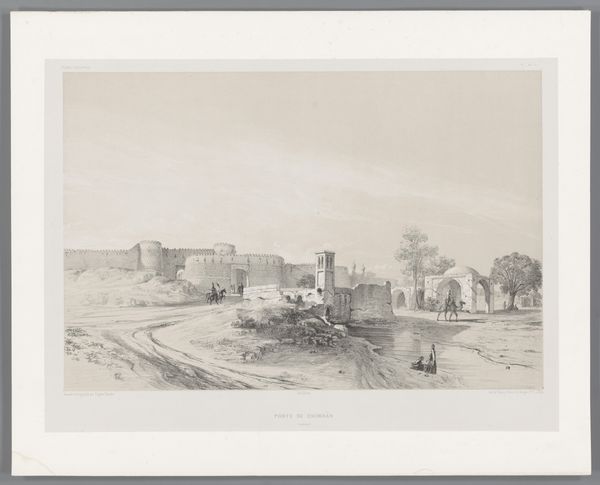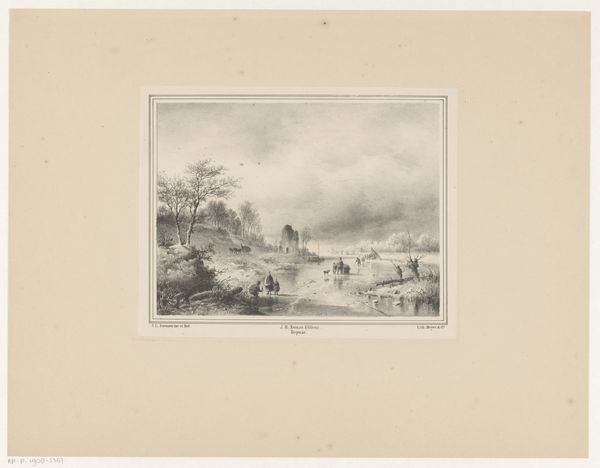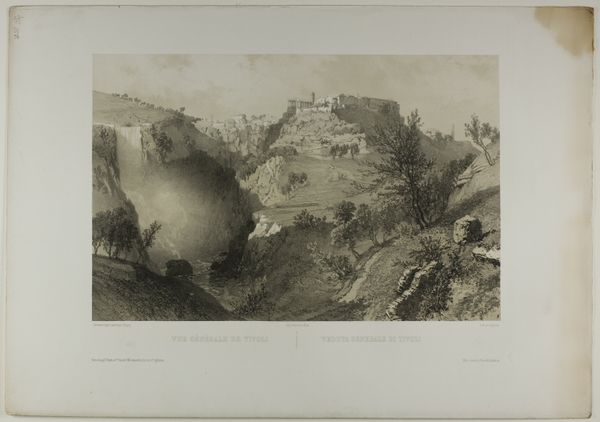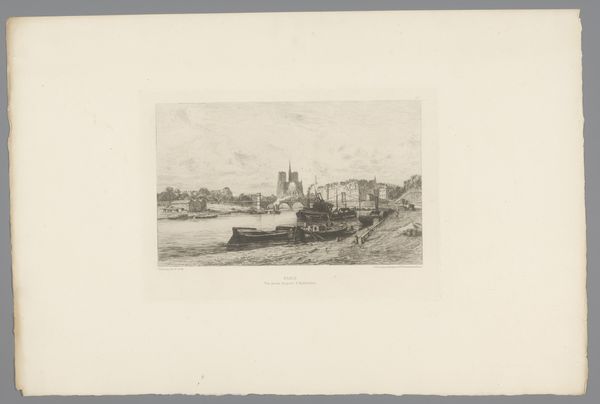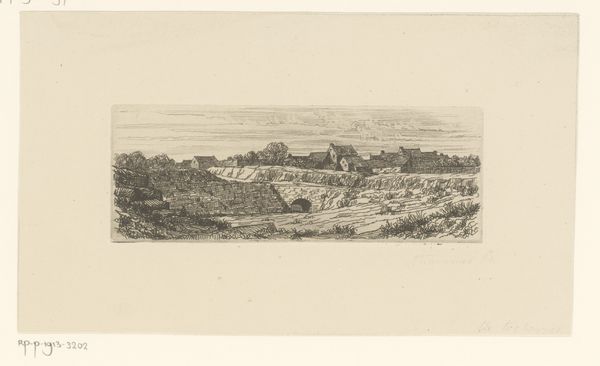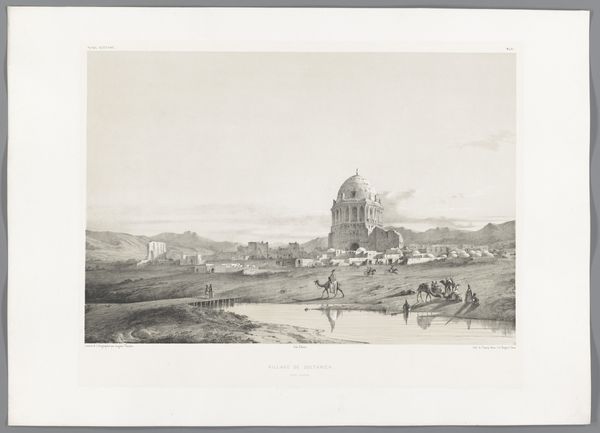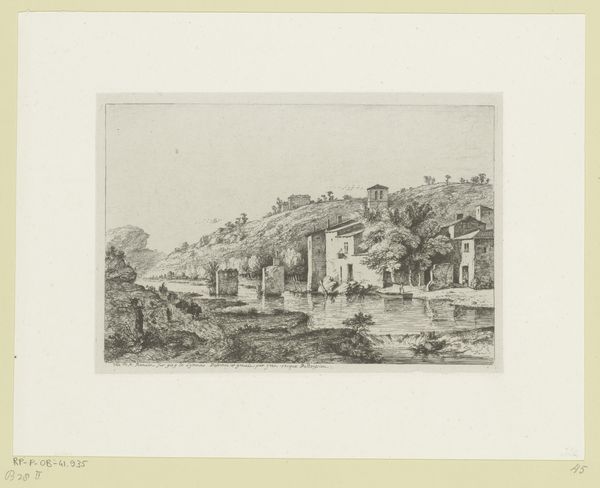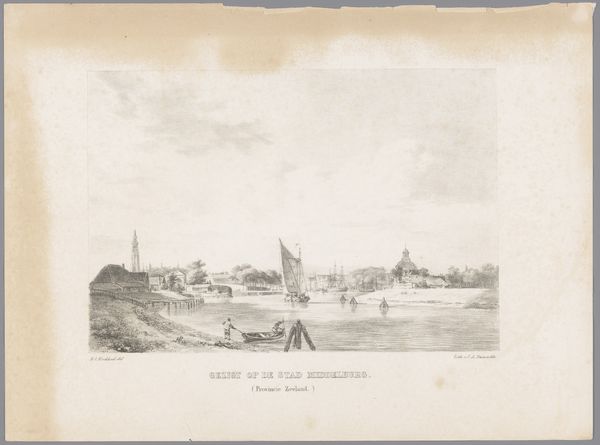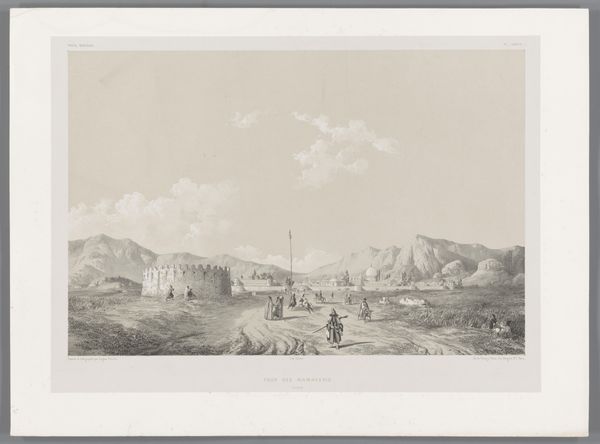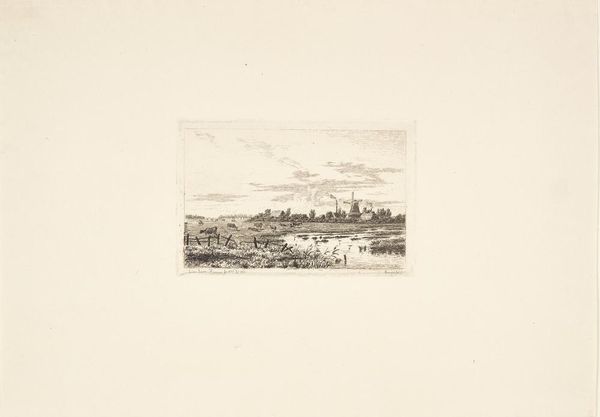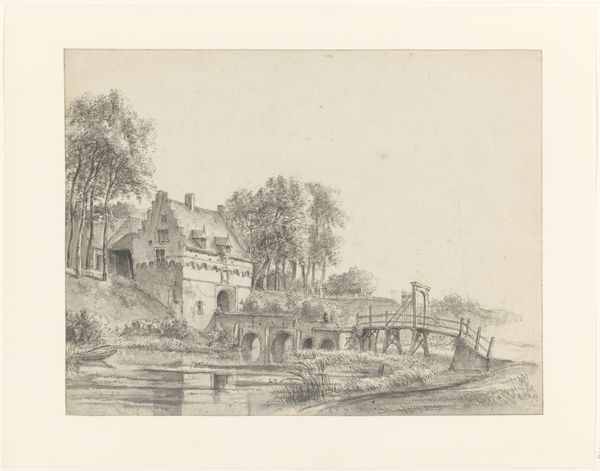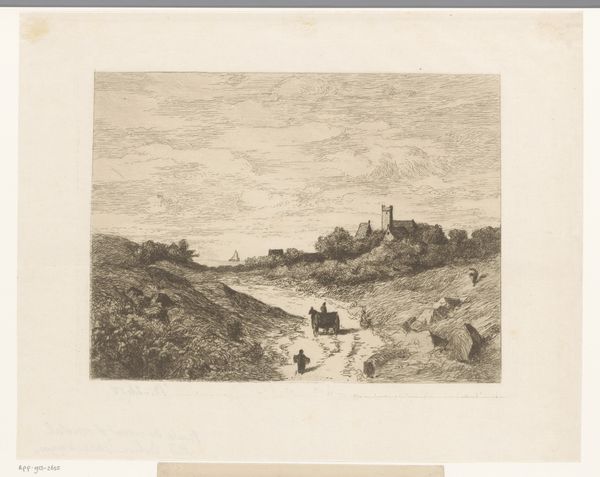
print, engraving
# print
#
landscape
#
perspective
#
form
#
romanticism
#
line
#
cityscape
#
engraving
Dimensions: height 427 mm, width 556 mm
Copyright: Rijks Museum: Open Domain
Editor: This engraving, "Waterval van Band Amir op de vlakte van Persepolis" by Eugène Flandin, was created sometime between 1843 and 1854. The scene it depicts has a strangely serene quality, considering the immense scale of the waterfall, or perhaps dam. What symbolic meaning can you gather from it? Curator: Water often represents purification, the flowing of time, and the subconscious. Given the context of Persepolis, we are looking at the memory of an ancient civilization through the romantic lens of the 19th century. Flandin presents us not just with a landscape, but with an experience of cultural memory, bridging a classical past with his contemporary present. Do you notice the figures within the image? Editor: Yes, I see people on horseback and also fishing near the waterfall. How do they add to the visual narrative? Curator: They represent a continuity of human life. The artist suggests that despite the grand, ruined structures of empires, the cycle of everyday life persists. The waterfall itself could symbolize a kind of erasing and a constant rebirth. Consider how the powerful vertical lines contrast against the ancient architecture – a visual dialogue between time's relentless force and humanity’s attempts to build legacies. Editor: That makes me think about how we perceive ancient cultures and ruins. It’s never really a complete picture, more like a fragmented memory. Curator: Precisely! Flandin’s romantic vision, steeped in a yearning for an idealized past, subtly encourages us to question how our own present might be perceived by future generations. The enduring power of water, as a destructive and creative force, becomes a metaphor for cultural change. Editor: That’s a really interesting way of thinking about it. I didn’t initially connect the persistence of nature with the rise and fall of civilizations, but that's an insightful connection. Curator: Art provides unique access to emotional, cultural, and psychological weights – offering pathways into how humanity remembers.
Comments
No comments
Be the first to comment and join the conversation on the ultimate creative platform.
